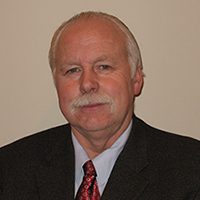
By / Peter Boileau, Chairperson, SMACNA-Western Washington Code & Technical Committee
As mentioned in a previous edition of this column, implementation of the Washington State Clean Buildings Act (now called the Clean Buildings Standard or CBS) is coming our way soon. This is a major change to existing commercial and some multi-family buildings in our state, in that by the dates targeted these buildings/owners need to both reduce their energy consumption and potentially switch from fossil fuels to electric/heat pump systems.
The target dates in this standard are 2026 for all buildings over 220,000 square feet, 2027 for buildings over 90,000 square feet, and 2028 for all buildings over 20,000 square feet. In the areas that our SMACNA – Western Washington members represent, there are literally hundreds of buildings over 220,000 square feet and thousands of buildings over 20,000 square feet. That means the Clean Buildings Standard will provide opportunities for all of us to install major upgrades in these candidate buildings. It also means we need to be responsible to educate our customers who own and operate these buildings on what’s coming and how best to meet this new law. As our committee is reviewing the details of this new legislation, we have some thoughts outlined below to share with our members.
The CBS not only focuses on reducing energy consumption in all new and existing commercial buildings, but also on the “de-carbonization” of new and existing buildings now and in the future. The CBS first appeared in 2016 in the form of the City of Seattle’s Building Tune-ups program, followed by passage of House Bill 1257 in 2019. This new law will be phased in over the next several years and requires buildings to meet target Energy Use Index (EUI) values for maximum allowed energy consumption. It will also eliminate the use of carbon-based fuels (primarily natural gas) in these buildings in favor of refrigeration cycle electric heat pump technology for heating, cooling, and domestic water generation. The target EUI standards are aggressive and will require substantial upgrades to buildings with old or low-efficiency HVAC systems, and given that the target date for compliance for buildings over 220,000 square feet is June 1, 2026, now is the time to start planning and budgeting upgrades to meet these new energy performance standards.
Another reason to get started now is that buildings that meet these goals prior to the dates above will be eligible for incentives, and those that do not comply by these dates will be subject to fines. In order to obtain at least some financial relief from these requirements via the incentives offered, we need to inform our customers and help them strategize the least-cost approach to this legislation. There are currently several incentive programs available to support energy efficiency upgrades, including Puget Sound Energy’s Clean Building Accelerator and Pay for Performance programs; Washington State Department of Enterprise Services Energy Savings Performance Contracting (ESPC) program for public buildings; and the Commercial Property Assessed Clean Energy and Resiliency (C-PACER) program for private sector projects, which provides commercial property owners a new source of financing for energy efficiency, renewable energy, water conservation, and seismic resilience improvements to their buildings.
In addition to these incentive and finance opportunities, the most ambitious new program developed so far is by the State of Washington in coordination with the major electrical utilities serving our state to develop the Early Adopter Incentive program, which is now available for all commercial and multi-family buildings over 50,000 square feet. This program has an initial budget of $75 million available on a first-come-first-served basis, with a maximum grant of $0.85 per gross square foot of building area. To be eligible for this incentive existing buildings must have a current EUI of at least 15,000 BTUH/SF/year more than the new CBS target EUI and must meet some additional requirements.
In order to help our customers take advantage of these incentives, we need to start sooner than later with benchmarking each candidate building’s current energy use, and from that, develop a plan on how to meet the new target EUI. From there, this plan must be budgeted to include not only mechanical upgrade costs, but also electrical and potentially architectural and structural work that may be required to install these upgrades. On large buildings this can be a complex and time-consuming process that can take months or even years to complete. We also need to be aware that this type of mechanical system upgrade will likely not be top priority for our customers, who simply want to continue operating their facilities without interruption. We need to work with our customers to educate them that the CBS is not optional, and that buildings not upgraded to meet the new EUI targets will not only lose incentives but also be subject to fines, meaning that “doing nothing” will be a painful option.
There is no doubt that in the coming months and years additional information will become available along with other new incentive programs to help our customers meet the ambitious new goals included in the CBS and now required by law. The SMACNA – Western Washington Technical and Code Committee is a resource for you to use to develop your solutions to this challenge, so please reach out with your questions as needed and our committee members will happy to assist as best we can with this complex issue. ■



